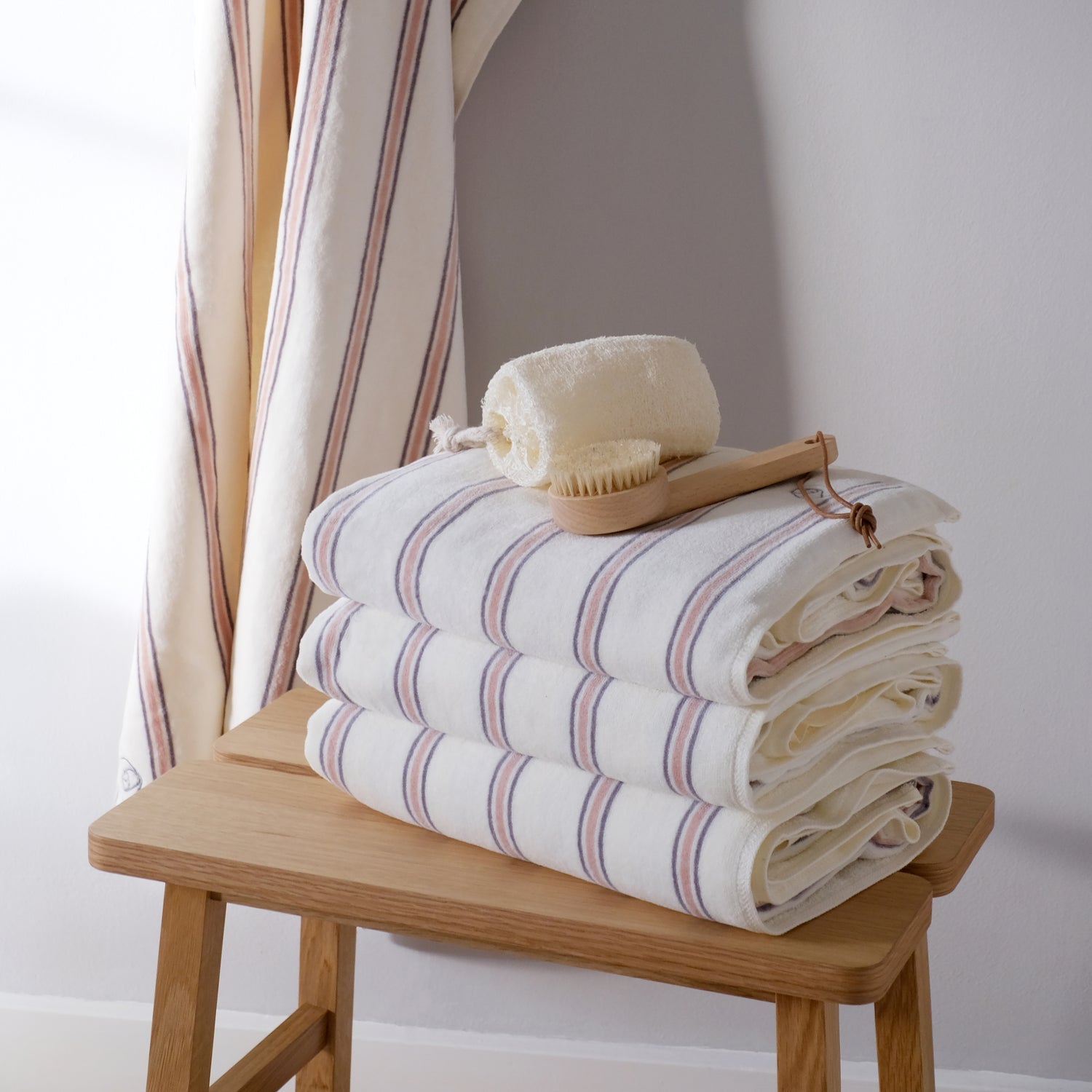Garment care
If you want to ensure your clothes with lasting color and structure, we recommend that you wash with properly caring. Use the correct detergent, be careful with the temperature and select the indicated wash program. You should only use the dryer for our bed linens and towels, while air drying is otherwise recommended.

Cotton
Cotton can withstand gentle wash at 30 degrees. We also recommend using a laundry bag for machine wash. Do not soak or tumble dry your cotton products.

Silk
With the right care of your silk styles, neither color nor softness will be lost and the clothes last longer. Avoid spraying perfume or deodorant on silk styles as this gives stains. Likewise, silk should not be exposed to direct sunlight for long periods of time because the color will fade.
When your silk styles need to be washed, we recommend wool, silk or hand wash program at max. 30 degrees. In that way, the water does not get too hot or the clothes twisted too much. For alternative handwashing, the water should be cold. Always use detergent suitable for silk to maintain texture and color. Few stains should not be removed with water as this also gives stains - so always wash the entire style. We recommend using a laundry bag as the silk is sensitive when it’s wet and also to keep the shine and suppleness of the silk. The clothes should therefore be treated carefully and must not be soaked or twisted.
Afterwards, you can either hang your silk style for air drying or you can roll the silk in a dry towel. Ironing must be done at low heat as the silk otherwise will be damaged. Like all other clothing, silk should always be ironed inside out and the silk should not be moistened with water before ironing as this gives stains. Therefore, iron the style moist from the beginning.

Wool
Wool blends are delicate and should be hand washed cold. If you are comfortable with your washing machine, you can carefully try machine wash on a wool or silk program at max. 30 degrees. Remember detergent suitable for wool to maintain texture and color. This also means that your wool styles must not be soaked. In addition, always use a laundry bag. After washing then squeeze the water out of the yarn by placing the style on a towel and roll it up while squeezing the water from the wool to the towel. This process continues until as much water as possible is gone. Now the wool style should lie and dry flat. Do not hang the style on a hanger as the style can be stretched and damaged in the structure.

Cashmere
By following the care and washing instructions, your cashmere style can retain its comfortable surface and last longer. You will not be able to avoid your cashmere style fluffing, as knitwear naturally gives off filaments of the yarn which are shown by small wool fluffs or peeling. This is especially seen under the arms, on the underside of the sleeve and on the elbows when yarn rubs against yarn. You can either remove the fluffs by hands or choose to remove them with the small comb that came with your purchase order. In that way, your cashmere style will fluff less and less over time. As a general rule, the comb should be used twice before your cashmere knit has finished casting filaments.
Cashmere also has a unique self-cleaning function which means that it is not necessary to wash your style as often. You can just hang it outside or take it to the bathroom when you take a shower. If and when you need to wash your cashmere, we recommend a wool or hand wash program at max. 30 degrees. In that way, the water does not get too hot or the clothes twisted too much. For alternative handwashing, the water should be cold. Use a laundry bag. Cashmere should not be soaked or twisted. After washing, you can iron your cashmere style in dry condition as this will keep it neat for a longer time.
Avoid hanging your cashmere style to dry on a hanger - instead lay it smoothly on a towel and let it dry at room temperature. We also recommend that your cashmere style is kept folded and not on a hanger as this can damage the structure of the style.

Viscose
Viscose loses 50% of its strength when the fabric is wet and must not be soaked. Be extra careful when pulling and twisting viscose styles. In addition, be sure not to wash viscose at too high temperatures. Wash by gentle machine wash and treat the clothes likewise.
Also, be aware that viscose can shrink many inches after being washed. Most inches come back when you iron the shape back or use the item. The heat from the iron and the body causes the viscose to stretch. However, viscose generally creeps a bit which is why we recommend avoiding buying clothes that are too small. Finally, remember that it is always a good idea to wash and iron your clothes inside out so that you do not damage the surfaces.

Bags
When cleaning our bags, we recommend warm water and a soft cloth. Twist the cloth well so it does not drip and then gently wipe the bag. Afterwards, the bag can be wiped off with a soft, dry cloth.

Towels
Wash your towels before use as this will improve the absorbency. Avoid using fabric softener when washing your towels. If you use fabric softener, a film will form which impairs the suction and drying ability of the towels. We recommend that you tumble dry your towels after washing for more softness.

Bed linen
Always wash your new bed linens before use. Wash the bed linens inside out and close zippers and buttons as this helps to protect color and textile fibers. In that way, the bed linens retain its softness. The bed linens can be tumble dried but it will gradually damage on the fibers. Try to dry your bed linens outdoors if possible. This also contributes to a more fresh feeling.
We always recommend that you follow the washing instructions on the care label for further information.



